Breast Lift in Ireland
Search and Compare the Best Clinics and Doctors at the Lowest Prices for Breast Lift in Ireland

Find the best clinics for Breast Lift in Ireland
No pricing info available
Czech Republic offers the best prices Worldwide
Price: $ 85
From 9 verified reviews
klo louise, 30 September 2019
Chloe is welcoming and friendly couldn't have made me feel any more at ease 😊
From 10 verified reviews
gary turner, 26 August 2020
had small procedure with auralia , have been back and forward a few times , can not fault this company at all ; professional ; spotless ; welcoming . would recommend to all i know
From 3 verified reviews
airi vilu, 20 May 2020
Had chin lipo with auralia They r absolutely brilliant clinic Excellent result , over d moon with d results Will b visiting soon again :)
- Home
- Ireland
Compare Before & After Photos of _procedure_photos.phpBreast Lift
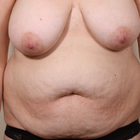
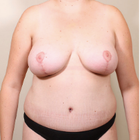
Front view
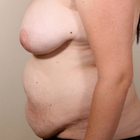
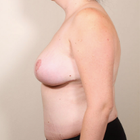
Full-side view

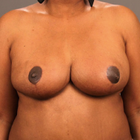
Front view
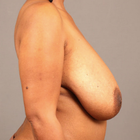
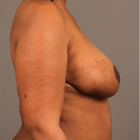
Full-side view

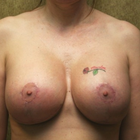
Front view
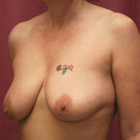

Half-side view
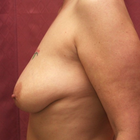
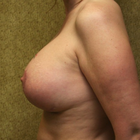
Full-side view
WHY US?
At Medijump, we're making medical easy. You can search, compare, discuss, and book your medical all in one place. We open the door to the best medical providers worldwide, saving you time and energy along the way, and it's all for FREE, no hidden fees, and no price markups guaranteed. So what are you waiting for?

Free

Best Price

Widest Selection

Risk-Free
What you need to know about Breast Lift in Ireland
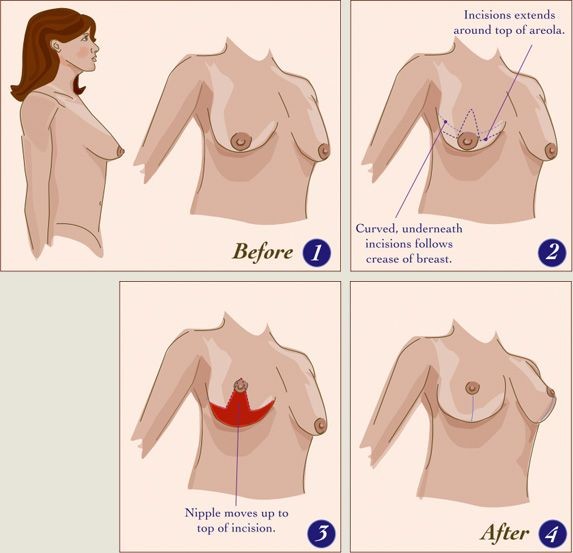
Commonly known as a Mastopexy, the breast lift is a surgical procedure to raise sagging breasts by modifying the contour and elevation. Breasts look saggy due to overstretched suspensory ligaments of cooper, excessive tissue, and skin. Lactation is also a cause of drooping breasts. During this procedure, a plastic surgeon removes excess skin and tighten the remaining tissue to create a more contoured and shapely breasts. Some patients may choose to have breast implants added as part of the procedure to give the breasts more volume.
After the surgery, you can expect to have round and elevated breasts. However, this surgery is not for everyone, you should talk to your doctor openly before opting for it. Your physical conditions and history are considered before going for surgery. Your surgeon will determine whether or not you are a good candidate for breast lift. For patients over the age of 40, a breast scan might be necessary.
A breast lift won't significantly change the size of your breasts. However, it can be performed in combination with breast augmentation or breast reduction.
What is the cost of Breast Lift in Ireland?
Due to a number of variables, including the complexity of the surgery, the surgeon's experience, and the location of the medical centre, the cost of the Breast Lift within Ireland may vary greatly. Typically, the anticipated cost might be hundreds of dollars.
However, it is important to emphasise that the cost should not come at the expense of the quality of healthcare, particularly when it comes to surgical procedures. For the greatest outcomes, it is advised to work with a reputed medical facility and communicate with a skilled surgeon.
What does a Breast Lift Procedure Involve?
A number of techniques are available for a breast lift. They differ in the location of incisions. The one suitable for you is chosen according to the condition of your breasts. The procedure begins with making you lay in the supine position. You are anesthetized, so that you may not suffer from pain during the surgery. After this, an incision is given around your areola descending down towards the crease where it runs horizontally. Stitches are given inside the breasts to suspend them. Excess tissue is removed. Sometimes, the size of your areola is decreased and nipples are shifted to a higher position. In most cases, the nipple-areola complex (NAC) is preserved to prevent damage to your lactational ability. After your surgeon removes exess skin, tissue, and fat, they put back the skin flap to its place and stitch the incision.
After the surgery, a bandage is applied over the operated area. You are then given a surgical bra to wear. Small tubes are placed near your incisions to drain any fluid or blood. These tubes are removed after several days.
How Long Should I Stay in Ireland for a Breast Lift Procedure?
Breast lift is a 2 to 3-hour procedure, after which you are moved from the operation theatre to a private recovery room. You are monitored for a few hours, and if everything goes fine you can go home on the same day, assuming no other surgeries were performed at the same time.
After being discharged from the hospital, you have to come for check-ups on a regular basis to ensure that nothing goes wrong. You should remain in Ireland for at least 7-10 days after the surgery. In this period, your incisions heal and stitches are removed. You can leave when told by your doctor.
What's the Recovery Time for Breast Lift Procedures in Ireland?
Plan to take 2 to 3 weeks off work for your breast lift surgery. There will be pain and swelling in the operated area and your breasts will appear swollen for almost 2 weeks. There will be redness and pain around your incisions. Your areola and nipple are likely to be numb for a few days.
In the early days, painkillers are given to help you with pain. You might have to wear surgical bras for 2 to 3 weeks, after which, you can wear regular bras. No underwire bras should be worn for at least 6 weeks.
What sort of Aftercare is Required for Breast Lift Procedures in Ireland?
Following points should be kept in mind to take care of yourself after being discharged from the hospital:
- Visit your doctor regularly for some time.
- Take your medicines as and when prescribed by the doctor.
- Follow a healthy diet plan for a better recovery.
- Ensure the presence of someone with you to look after you.
- Do not wear push up bras for 5 to 6 weeks after the surgery.
- Wear surgical bras in the early few days.
- Avoid excessive movement of your breasts.
- Do not take a bath as long as bandages are there. Wet bandages can be the cause of infection.
- Do not bend.
- Avoid sexual activity for at least 2 weeks.
- Do not lift heavy objects or kids. It can put stress on your stitches, removing them before due time.
What's the Success Rate of Breast Lift Procedures in Ireland?
According to a survey, 80% of women are satisfied by breast lift surgery. Their bust is restored, and sagginess disappeared. Most people experience long-lasting results, while others might need minor revisions after a few years.
For an in-depth analysis of the Breast Lift procedure with before and after images, watch this short video.
Are there Alternatives to Breast Lift Procedures in Ireland?
The following are some non-surgical alternatives to breast lift surgery:
- Padded bras: padded bras or push up bras give a rounded contour to your breasts without incisions. Bras lift your breasts up eliminating the droopy appearance. However, this is not a permanent method.
- Vampire breast lift: in this procedure, platelet-rich plasma (PRP) injections are given which restore your bust. This is a 20-minute procedure in which a numbing cream is applied onto your breasts. After they go numb, PRP along with hyaluronic acid is injected into your breasts. It tightens your breasts and lifts them up. Hyaluronic acid increases the efficacy of PRP.
- Laser treatment: high power laser is used to stimulate the growth of collagen. It only targets the outer layers of skin. Hence, rejuvenating the skin only.
- Caci bust treatment: a device releasing electrical impulses is moved over your breasts. It hydrates your skin and gives strength to the tissue. Improving the contour of your breasts.
- Botox: These injections are given into your chest muscles. As a result, these muscles relax. To compensate for these muscles, your back muscles contract, lifting your breasts higher. This can last for 3 to 4 months.
- Thermage: in this procedure, radio waves are used to tighten the skin of your bust. Production of collagen is stimulated which lifts the skin of your droopy breasts.
- Chest exercises: you can do different chest exercises to strengthen your chest muscles. It tightens the skin and raises your breasts. It is more effective if performed under the supervision of an instructor.
What Should You Expect Before and After the Procedure
The preliminary phase before the Breast Lift generally requires an exhaustive health evaluation, which includes a mammogram and the measurement of your breasts. The medical facility will recommend you to avoid drugs that could escalate the risk of bleeding, for instance, Aspirin. They may also request that you refrain from smoking since nicotine can hinder the recovery process.
Post Breast Lift, you are likely to be required to wear a healing bandage or post-surgical bra to reduce swelling and provide support to your breasts during the healing phase. It is possible that a slender tube may be inserted to eliminate any surplus blood or fluid. Normal post-procedure discomforts include pain, bruises, and swelling that can be effectively handled with prescribed pain medication. The medical facilities will issue comprehensive instructions regarding wound maintenance, medicine, and consequent appointments. Participating in arduous activities is advised against for approximately six weeks after the surgery.
Do note that personal experiences with the Breast Lift can vary slightly. The duration of the healing process and the ultimate outcome heavily rely on personal health conditions, lifestyle practices, and compliance with instructions after the operation.
What are Potential Risks of Breast Lift?
There are, however, risks and side effects you need to be aware of. Some of these risks include:
- Infection
- Bleeding
- Scarring
In rare cases, the surgery might not be successful. Failed surgeries leave marks on your breasts which can be subjected to hypertrophy. Also, there might be a difference in the shape of both breasts. In these cases, revisional breast lift surgery is performed
Whilst the information presented here has been accurately sourced and verified by a medical professional for its accuracy, it is still advised to consult with your doctor before pursuing a medical treatment at one of the listed medical providers
No Time?
Tell us what you're looking for and we'll reachout to the top clinics all at once
Enquire Now

Popular Procedures in Ireland
Prices Start From $208

Prices Start From $89

Prices Start From $931

Prices Start From $76

Recommended Medical Centers in Ireland for Breast Lift

- Interpreter services
- Translation service
- Religious facilities
- Medical records transfer
- Medical travel insurance
- Health insurance coordination
- TV in the room
- Safe in the room
- Phone in the room
- Private rooms for patients available

- Interpreter services
- Translation service
- Religious facilities
- Medical records transfer
- Medical travel insurance
- Health insurance coordination
- TV in the room
- Safe in the room
- Phone in the room
- Private rooms for patients available

- Interpreter services
- Translation service
- Religious facilities
- Medical records transfer
- Medical travel insurance
- Health insurance coordination
- TV in the room
- Safe in the room
- Phone in the room
- Private rooms for patients available

- Interpreter services
- Translation service
- Religious facilities
- Medical records transfer
- Medical travel insurance
- Health insurance coordination
- TV in the room
- Safe in the room
- Phone in the room
- Private rooms for patients available

- Interpreter services
- Translation service
- Religious facilities
- Medical records transfer
- Medical travel insurance
- Health insurance coordination
- TV in the room
- Safe in the room
- Phone in the room
- Private rooms for patients available

- Interpreter services
- Translation service
- Religious facilities
- Medical records transfer
- Medical travel insurance
- Health insurance coordination
- TV in the room
- Safe in the room
- Phone in the room
- Private rooms for patients available

- Interpreter services
- Translation service
- Religious facilities
- Medical records transfer
- Medical travel insurance
- Health insurance coordination
- TV in the room
- Safe in the room
- Phone in the room
- Private rooms for patients available

- Interpreter services
- Translation service
- Religious facilities
- Medical records transfer
- Medical travel insurance
- Health insurance coordination
- TV in the room
- Safe in the room
- Phone in the room
- Private rooms for patients available
Breast Lift in and around Ireland
Introduction
Ireland, also known as the Republic of Ireland, is a country located in north-western Europe that occupies 26 of 32 counties on the island of Ireland. The country’s breath-taking landscape, wonderful people, and fascinating history have made it an unforgettable destination for many visitors. Aside from its beauty, more and more people also come to Ireland for high-quality healthcare. The country is a newcomer to the medical tourism market. However, it’s seen as an increasingly attractive destination due to the reasonably priced and high standard of clinical care available in the country. Most foreign patients come for cosmetic surgery and dental treatments, but many hospitals and clinics in the country offer a wide variety of services, such as cardiology, pathology, pulmonary, and gynecology. Also, the Joint Commission International has accredited several hospitals in the country, most of which are located in Dublin.
Popular Cities and Regions in Ireland
Ireland’s capital and largest city, Dublin, is the most popular tourist destination within the country. In fact, it’s the fourth most visited European capital. It’s filled with excellent pubs serving the perfect pint of Guinness, amazing Georgian architecture, and layers of fascinating history. Tourists in this city usually visit the Guinness Storehouse Factory, tour the Old Jameson Distillery, admire the Spire of Dublin, explore Dublin Castle, and marvel at the beauty of St. Patrick’s Cathedral. Another famous city is Cork, which is the second-largest city in the country. It’s a youthful cosmopolitan city packed with artisan coffee bars and snug pubs. Tourists usually come to kiss the Blarney Stone for good luck, enjoy the coastal landscape in Mizen Head, or hike around Gougane Barra. Other popular cities and towns include Galway, Killarney, Kilkenny, and Letterkenny.
Transport in Ireland
The main airport in Ireland is Dublin Airport. It connects the country with numerous cities around the world, including New York, Abu Dhabi, and Hong Kong. Trains and buses are available to travel around the country. However, public transportation is generally sparse in rural areas. Therefore, renting a car is the best mode of transport. Taxis and Uber are available to travel inside major cities.
Visas in Ireland
Ireland has opted out of the Schengen Area. The country allows all EU citizens, as well as citizens of 56 other countries (such as the UAE and the US), to stay without a visa for up to 90 days. Citizens of other countries are required to apply for a visa in advance.
Weather in Ireland
Summer (June – September) provides plenty of sunshine and lower levels of rainfall, with an average temperature of 14°C - 16°C. Winter (October – February) is chilly, with ample rainfall and some snow. Spring and autumn are generally pleasant, with warmer temperatures and more sunshine.
Additional Info
- Local Currency: The official currency is the euro. 1 EUR is approx. 1.08 USD.
- Money & Payments: ATMs are easy to find. Credit and debit cards are widely accepted. Tipping is expected in some places, typically 10% for decent service.
- Local Language: There are several languages used in Ireland. English has been the predominant first language since the late 18th century, but Irish is still widely used by a small percentage of the population.
- Local Culture and Religion: The constitution of Ireland guarantees freedom of religion. Christianity is the largest religion. However, Islam, Hinduism, Judaism, Buddhism, Neo-Paganism, and other religions are present.
- Public Holidays: Some of the most celebrated public holidays are New Year’s Day, St. Patrick’s Day, Easter Monday, Christmas Day, and St. Stephen’s Day.
Popular Searches
- Plastic Surgery in Thailand
- Dental Implants in Thailand
- Hair Transplant in Thailand
- Breast Augmentation Thailand
- Gastric Sleeve in Thailand
- Gender Reassignment Surgery in Thailand
- Laser Hair Removal in Bangkok
- Botox in Bangkok
- Dermatology in Bangkok
- Breast Augmentation in Bangkok
- Coolsculpting in Bangkok
- Veneers in Turkey
- Hair Transplant in Turkey
- Rhinoplasty in Turkey
- Stem Cell Therapy in Mexico
- Rhinoplasty in Mexico
- Liposuction in Mexico
- Coolsculpting in Tijuana
- Rhinoplasty in Korea
- Scar Removal in Korea
- Gastric Sleeve in Turkey
- Bone Marrow Transplant in India
- Invisalign in Malaysia
- Plastic Surgery in the Dominican Republic
- Tummy Tuck in the Dominican Republic
- Plastic and Cosmetic Surgery in Poland
- Rhinoplasty in Poland
- Hair Implant in Poland
- Dental Implants in Poland
- IVF in Turkey


